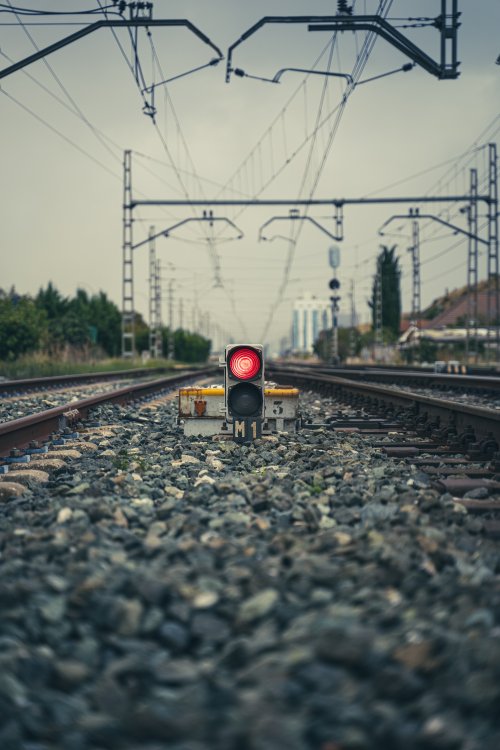The first railway was built back in the 19th century. Many things have changed since then and are still changing. Artificial intelligence, driverless trains, and much more. We have put the most important things in the past, present and future of railway transport into one article.
Railway transport was created at the time of a technological boom – another technological revolution in Great Britain, and today it starts playing an important role in the digital economy.
“Railway transport is more energy efficient that any other form of transport and may become even more so.”
International Electrotechnical Commission (IEC)
How it all began
The first place to have a railway with steam engines was England. In the second decade of the 19th century, a 40 km railway was built to connect Darlington and Stockton-on-Tees so that coal could be moved from mines to the port and then put on ships. Profit was a consideration of course, which resulted in an extension line to the port at Middlesbrough. In 1830, the first railway line – Charleston-Augusta – opened in the US, covering 64 km.
Russia’s first railway connected the capital to Tsarskoye Selo and Pavlovsk. The project was initiated and designed by an Austrian engineer Franz Anton Ritter von Gerstner, Professor at the Vienna Polytechnic Institute. The Tsarskoye Selo Railway was 25 versts (26.3 km) long. In the beginning, trains were horse-drawn, with steam engines operating on weekends and holidays.
Building materials and parts were purchased overseas: rolling stock, rails and fastenings, and steam engines for water supply and water pipes. There is an interesting fact about the track gauge. European countries did not have a common track gauge standard for a long time. It was only established in 1846, in England: 1,435 mm. For the Tsarskoye Selo Railway, Gerstner suggested a six foot (1,829 mm) gauge. This allowed larger carriages that could convey larger cargo, including horse-drawn carriages.
Now or tomorrow?
“Effective operation of railway transport in the Russian Federation – the basis of Russia’s transport infrastructure – is critical for creating an environment for modernization, transition to innovation- based development, and sustainable growth of the national economy.”
Railway Transport Development Strategy 2030 of the Russian Federation
Railways are a whole system with a complex internal design, which could be compared to gigantic clockwork in a tower clock of a town square. By the way, citizens’ everyday lives were built around such devices in past centuries. Particularly when the only way to know the time was to go to the main square and look at the clock. Railways are the same. People even used to set their watches by trains, which nearly always passed according to schedule. However, there is a lot to think of if such a system is to work smoothly and safely. This is why there is a great focus on that across the world. There are international standards for onboard electrical equipment, signaling and communication equipment, traction transformers and inductors on rolling stock. There are also various requirements for AC switchgear, control and monitoring systems, communication, signaling and data processing systems, etc.
The railway industry is often viewed as conservative. This is not the case at all. Yes, the foundation was laid in the past centuries, but the digital era comes with its own rules. Therefore, there really is a need to continue research, with a creative approach that would cover today’s and future engineering.
The key trends today include: driverless train control, real time monitoring of rolling stock and infrastructure, increasing accuracy of passenger information and predictive maintenance planning, and, most importantly, seamless travel with integration with other forms of transport.
There are railway transport development forecasts. For example, according to the International Transport Forum, passenger mobility and freight will increase by 200%-300% and 150%-250% respectively by 2050. There is no avoiding these challenges; therefore the science sector is trying to find smart solutions to provide adequate capacities to accommodate the growing demand for travel and freight. But let’s begin from the beginning.
European standards
ВEurope has a special system called ERTMS. It includes signaling and traffic management for trains that facilitates cross-border transport across Europe, improves safety, reliability and capacity, and lowers railway maintenance costs. In more detail, ERTMS consists of:
• a signaling, control and protection system for trains, known as the European Train Control System (ETCS);
• a radio communication and voice&data transmission system (GSM-R);
• a traffic management system optimizing train operations through smart interpretation of timetables and train data, known as European Traffic Level Management L (under development);
• operational principles and rules (European working regulations).
Europe is successfully using a rail traffic monitoring model. It involves sensors and electronic trackers that are installed in railway corridors. They transmit their location and speed to the center (RBC) using radio signals. RBC receives such data from all trains in an operation zone and then displays the real digital schedule in the network. Route verification follows. If everything is clear with the route, it is booked for a particular train, and a traffic authorization is sent to the driving cab.
The contact between trains and RBC is so smooth that delays between rail track sections and delays of information on section availability times are minimized.
Russian inventions
The latest news regarding development of railway transport in Russia includes driverless trains. The design was developed by Cognitive Pilot, a Russian company creating driverless systems. The start of the testing of such locomotives with artificial intelligence (AI) was announced in the fall. No equivalent exists in the world.
The locomotives are equipped with the Cognitive Rail Pilot with a system of technical vision that can detect objects on a railway (other trains, railway points, tracks, traffic lights, etc.)Artificial intelligence evaluates the environment and sends warnings to the driver as necessary. The designers envisaged a situation where the driver fails to respond to such signals. In such cases, it is AI that makes the decisions.
Employees of the SFEDU Design Center have found another method of improving safety. They created the “System for monitoring, assessment and forecasting of the state of technical facilities on the basis of artificial intelligence and MEMS technology.” It is an innovative Russian system for assessment and forecasting of the technical condition of a broad range of machines, mechanisms, process equipment and structures, using intelligent production technologies and artificial intelligence.
Umbrella IT have already made the first venture capital investment in such technologies.
“Our system can register and detect defects in technical structures, such as railway tracks,” Mark Denisenko, leading research officer with the Design Center of Micro-Electronic Component Base for Artificial Intelligence Systems at the Southern Federal University.
Photo on the main page and on the page: DaYsO / Photo bank Unsplash






















